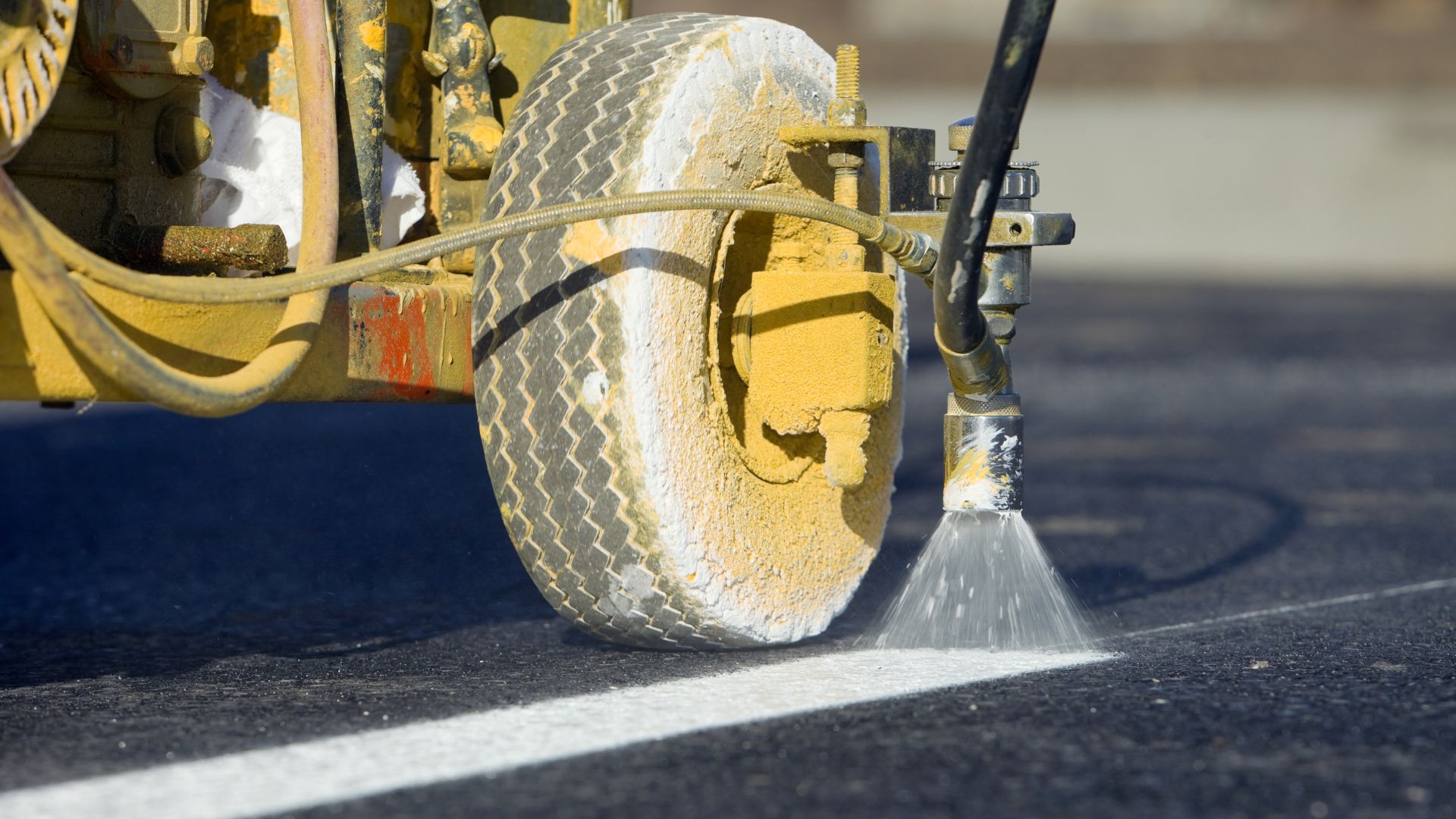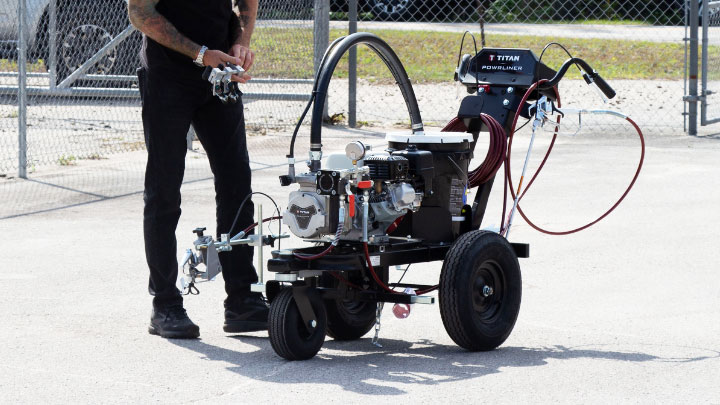
3 Mistakes People Make When Starting a Line Striping Business
If you’re thinking about starting a line striping business, you’re on the right track. It’s one of the most in-demand services in the pavement maintenance industry, and the barriers to

If you’ve ever scrolled through contractor Facebook groups, you’ve probably seen dozens of different answers. That’s because pricing varies widely depending on your region, the job size, the condition of the lot, and your operating costs.
In this guide, we’ll break down a real-world framework for how to price parking lot line striping jobs—helping you avoid common mistakes and grow your business with confidence.
In this industry, pricing by the linear foot is the most common method. But even that varies based on location and job size. Some contractors charge as little as $0.40 per foot, while others go as high as $1.25 or more.
Here’s what pricing per line typically looks like, based on a standard 18-foot parking line:
That’s a wide range—and choosing the right end of the spectrum depends on the type of client and job you’re bidding on.
For small parking lot line striping jobs—like a dentist office or chiropractor clinic with 10 lines—charging $7.20 per line just won’t cut it. You’ll spend more time traveling, setting up, and prepping than striping.
That’s why many experienced contractors charge $1.25 or more per foot for these smaller lots. A real-world example: A 10-line job with a handicap symbol and access aisle was priced at $450 and completed in under 2 hours. The customer got a clean, professional lot, and the contractor earned fairly for time and materials.
With big jobs, you can price more competitively without sacrificing profit. Take a shopping center with 500 lines:
Even at the lower rate, that’s a solid payday for a full day of striping with the right equipment. Paint and labor are spread out over more lines, so your per-line costs go down. This is where volume helps your margins.
Here’s a simple framework I use when pricing a job:
As much as we want to make a lot of money on every job, here’s the hard truth: if you overprice, the customer will likely get a second opinion—and you’ll probably lose the job.
I had one situation where I originally quoted $950 for a striping job. But after thinking it through, I dropped it down to $800. The client got back to me by the end of the week and booked the job where I still made a solid profit.
The lesson? Price fairly—not fearfully.
Pricing isn’t just about winning the first job. It’s about creating long-term customer relationships. Contractors who price fairly—without gouging—tend to get repeat work, referrals, and trust.
In competitive markets, like Oklahoma, low-balling isn’t sustainable—but value-based pricing is. If your price seems reasonable, clients will choose you. If it seems unreasonable, they’ll shop around.
Pricing parking lot line striping jobs is part art, part science. The key is knowing your numbers—your costs, your time, and your market. Start with a basic pricing structure, adjust based on the job size, and always deliver value.
The more jobs you quote and complete, the more confident you’ll become. With the right approach, you can build a line striping business that’s both profitable and trusted in your community.

If you’re thinking about starting a line striping business, you’re on the right track. It’s one of the most in-demand services in the pavement maintenance industry, and the barriers to

If you’re in the parking lot striping business or planning to get started, choosing the right equipment can make or break your productivity. In this post, we’re diving into the